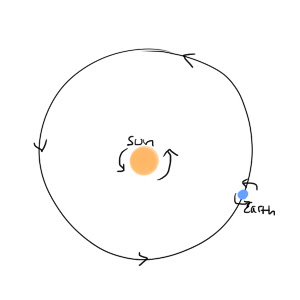Sunday, October 31, 2010
Spectral Classification of Stars Lab
Sunday, October 24, 2010
Sky Journal Week 5
Apollo 13 EC Notes
Weekly Reflection 5
Problem areas:
1) The homework. The logic behind the homework. Where the heck do some of the numbers come from? What data from the appendices are you supposed to use?
2) The tides are still a little shifty - I have the basic concepts, but not stuff with the CALCULATING the tide/weight/etc problems.
Homework Ch 4, 5, and 9
Solar Spectra Lab Reflection
Solar Spectra Lab

Reflection for Properties of the Sun Lab
Friday, October 22, 2010
Properties of the Sun Lab

Solar Research (Question #2)
http://www.astronomy.com/asy/default.aspx?c=a&id=2088
Solar win, earth’s magnetosphere, and electron transitions work together to create something that many people only see in pictures: an aurora. Earth can usually see two auroras, positioned at the north and south poles, called “aurora borealis” and “aurora australis” respectively. Auroras are caused by the fluctuation and motion of the sun’s solar wind, a constant stream of particle extending from the sun’s magnetic field, and the earth’s magnetosphere, the protective shield produced from the magnetic pulls of the earth and centered around the north and south poles. The solar wind moves at a rate of 250 miles per second away from the sun, fast enough to break free of the magnetic field and continue towards earth. As shown in the picture below, the shape of the magnetic field from earth would be less squashed on the side closest to the sun if it weren’t for the solar wind. When the earth’s magnetic field and the sun’s solar wind interact, an aurora can be seen only at the north and south poles, where the magnetic pull of the magnetosphere are most apparent and originate.

When this interaction occurs, electrons and protons from the atmospheric gases smash together, and a display of lights occurs in patterns in the sky between 60-155 miles above the earth. When an atom becomes excited and begins to promote and demote electrons, a light is emitted at various frequencies according to the element. For example, oxygen gives of a greenish yellow light, nitrogen gives off violet-blue light, and at lower altitudes the two gases together give off a bright red. When the three are combined, they create the colors we see in auroras most commonly.

APOD Photo #2

Monday, October 18, 2010
Weekly Reflection 4
Sky Journal Week 4
Sunday, October 17, 2010
Satellite Motion Lab POST LAB Questions
Satellite Motion Lab
PRELIMINARY QUESTIONS:


Monday, October 11, 2010
Weekly Reflection 3
Spectra Lab Reflection
Spectra Lab
HELIUM | emission | one of each color except cyan/green



Wednesday, October 6, 2010
Telescope Research



